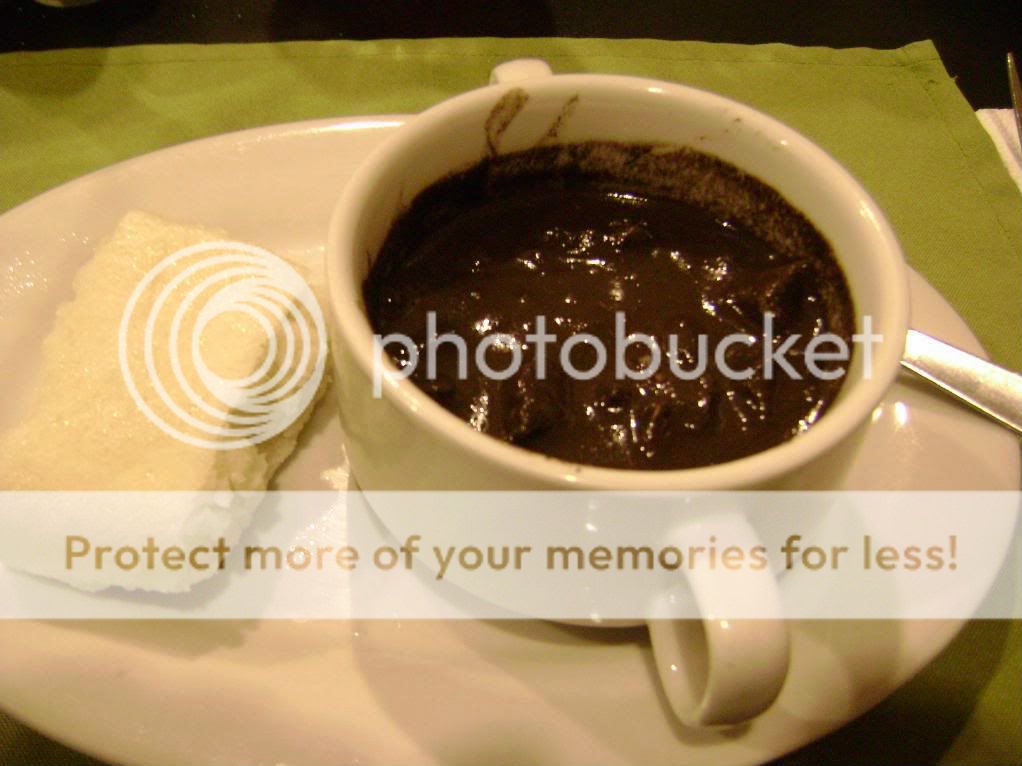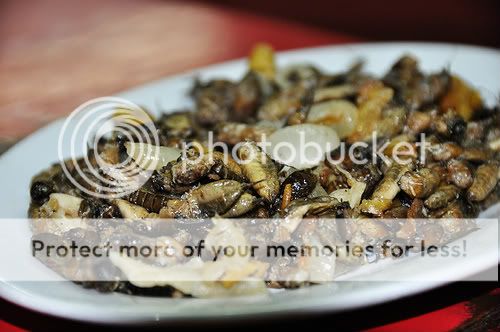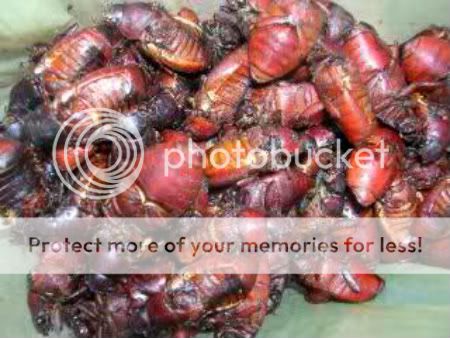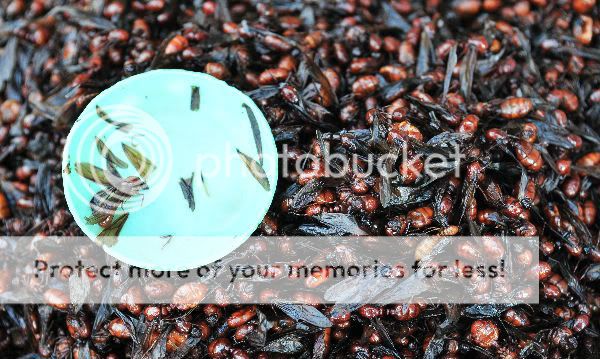It looks like the long holiday season is finally reaching a wind up with the celebration of the Chinese New Year. Regretfully, I must say, because these long successive celebrations are like a-license-to-indulge in food and drinks without guilt and hesitation. However, the long food exposure could result to either loss in appetite or an increased one. So, how do you regularize your food intake after a long period of indulgence? Try something exotic for a change! Weird is sometimes delicious, or maybe not :) In any case, you must be brave!
Exotic food is called such because it is strange or unfamiliar depending on your culture, nationality, social class or sometimes even travel history. The oddness of a food therefore, is actually subjective and personal. What maybe weird to you could be a staple for others. Here are some exotic foods that I personally encountered, some of it became my favorites, others I have tasted and never ate again and a few I chickened out! I have blogged about one of my food adventures and personal encounter with the "deliciously weird," read more
HERE.
 |
| Nope, it's not black coffee. It's Dinuguan and Puto! |
1. Dinugaan (Pork blood stew) - Food normally looks pleasing and palatable but this dish is an odd looking thick black soup with unrecognizable meat. If you are served this kind of food for the first time and informed of its main ingredients namely pig's blood, pork meat (may include pig snout and ears hehe) and offal (typically pig's lungs, kidneys, heart and intestines), you might excuse yourself or be brave and discover its rich savory yumminess! My first encounter with
dinuguan was when I was about 9 or 10 years old upon the "gentle" prodding of my mother. I knew that the black icky soup was pig's blood so I was vehemently shaking my head from side to side while my mother held my jaw as she spoon fed (or jammed?) me the rice topped with the black thing which I thought was yucky! I remember crying while chewing it until the flavor took over my grief and defiance... "uhmm mom, one more spoonful, please!" This goes to prove either of the two: My mother knows best or I have no pride when it comes to tasty food LOL! By the way,
Dinugaan is also very good when paired with
puto (Steamed rice/flour cake).
 |
| Oh, My Duck! It's Balut! |
2. Balut (Fertilized Duck Embryo, boiled) - Fertilized, which means almost hatched and alive... uh oh! Yes, it looks fetus-like with the chick all curled up in its shell with hair, two feet, beak and eyes! Vegetarians and animal lovers would be horrified, so please bear with me. But yes, it's delicious once you get the hang of it. Some eat it warm from the shell to avoid seeing the poor bird but I prefer to put mine in a sauce plate after I sip the hot
sabaw (broth) from the shell so that I can season it with vinegar and salt. I eat it with a
kutsarita (teaspoon) starting with the
dilaw (yolk; literal translation: yellow) and bit by bit the
sisiw (chick embryo), eating the head last. I don't mean to gross you out but that is really how it is eaten by some, umm me included. The
balut is very rich in protein and said to be an aphrodisiac food, the latter I really can't vouch for.
 |
| Food for the brain? Dinakdakan! |
3. Dinakdakan (Grilled Pig's face with pig's brain!) - It feels like I'm writing a gory horror story now! But I must admit
dinakdakan is one of my favorite exotic foods. It is the
Ilokano counter part of the
Kapampangan's sisig. It both uses the same main ingredients which are the pig's
maskara (pig's cheeks, ears and chin; literal translation: mask) and pork liver. The
sisig is boiled, broiled and fried then diced together with spices and served on a sizzling plate with
calamansi (golden lime)
and hot sauce. The
dinakdakan on the other hand is boiled, grilled and diced then seasoned with salt, pepper, vinegar, ginger, garlic, onions,
siling haba (finger chilies) and
siling labuyo (cayene pepper) then thoroughly mixed with boiled and mashed pig's brain... yep, pig's b-r-a-i-n! It's best served cold paired with a cold bottle of beer ;) The finished product actually looks delicious and tastes so creamy and flavorful that first timers would often mistake the pig's brain for mayonnaise! I swear I was once fooled!
 |
| Bitter is Better? Papaitan! |
4. Papaitan (goat or ox stew with offal and bile!) - Yes, liver bile or gall is purposely included to make the stew bitter, thus the name
papaitan which comes from the Filipino root word "pait" meaning bitter. The
papaitan's color is also a weird mixture of dark green, yellow and black. It is cooked with spices and vinegar. This dish is served piping hot usually with
calamansi, patis and
siling labuyo as
sawsawan (with golden lime, fish sauce and cayenne pepper as dipping sauce). An acquired taste might be necessary to like this authentic Filipino dish, which I did a long time ago.
 |
| Sausage Soup? Try Soup Number 5! |
5. Soup No. 5 (Ox gonad and phallus soup!) - Now, this blog post is becoming really disturbing... but yes, Soup No. 5 is a popular dare-food among the bravest food lovers especially males since it is said to be an aphrodisiac. It is also popular to couples who want to have children because it is believed to help increase fertility which is the reason why Soup No.5's ingredients may include mushrooms, ginseng,
sibot (chinese herb) and other herbs. In any case, this exotic dish is not for the faint of heart! I was a kid when I first tasted it during one of our family reunion beach parties. I was curious because it was not very usual to see the adult male members of the family all clustered and busy in the kitchen. They were giggling and joking like excited kids cooking up something... I heard it was Soup No. 5 they're making... and I thought "hmnnn I love soup!" So, me and my other cousins went for it but spit it out the moment we learned what it's made of! From what I recall, I didn't like much the smell, texture and taste. No, I'm not a big fan but maybe I'll give it another try when I'm brave enough but for now, I'll pass. Soup No. 5 is best eaten when drunk LOL!
6.
Ararawan (Mole crickets!), Salagubang (Scarab beetles!) and Simut-Simot or Gamu-Gamo (Winged ants!) - Insects are not all pests, sometimes they are edible!
 |
| Cricketty Crispies? Ararawan! |
One of them is the
Ararawan, in
Ilocano or the mole cricket. These chirping insects inhabit agricultural fields and burrow themselves in soil but also have wings and could fly. They are thick-bodied insects making them crunchy when toasted or stir-fried. The head is not included when you cook it because the snout is sharp and hard. My father once ordered this dish in a restaurant when we visited Nueva Ecija. I mustered all strength to eat one piece, it was crunchy and tasted like peanuts although I didn't like the texture because I felt its legs slightly prick my tongue when I first sip on it prior to chewing ... or maybe I just imagined it?
 |
| It's a bug's life! Salagubang! |
The
Salagubang (June beetles) are compact, heavy-bodied, oval shaped bugs! Their wings are thick and polished ranging from dark brown to almost black.They mostly come out during the rainy season around May to June. The usual way to cook the
salagubang is
adobong tuyo (braised in soy sauce and vinegar with onions and lots of garlic then simmered until dry) wings and legs, not included. It is eaten by breaking it by the head and pinching the body to sip the flesh out from its belly. It is rich in protein and claimed by my cousins to be really tasty and savory. The next time I encounter the
adobong salagubang, I swear, I'm so gonna eat these bugs!
 |
| Itching for crunchies? Simut-simot! |
Simut-Simot in
Ilocano or the
Gamu-Gamo in Filipino (Winged ants) - These insects mostly appear en masse at night to seek light before or after a rainfall. You could catch them by placing a basin of water underneath the light where they gather. The trapped (or more like drowned) insects should be dewinged prior to stir frying or sauteing. It is said to be crunchy and creamy but I never had the nerve to eat it... but who knows :)
 |
| Froggy Broth? Palakang Bukid! |
7. Palakang Bukid (Ricefield frogs) - It is cooked anyway you cook your chicken and it is said to taste just like it. The frog meat has become so popular because of its taste and claims of curing properties. Some are actually raising them for business. I haven't tried eating it but I'm open to the idea.
 |
| Crispry Fries? Dagang Bukid! |
8. Dagang Bukid (Rice field rats!) - Oh no, this is by far the ultimate challenge of all to many adventurous food enthusiasts! For me however, rats, whether they live in the city or the rice field is a no, no! I don't mean any offense to the exotic meat's eaters and lovers but you see, rats rank as Top 5 in my worst fears as previously blogged
here. So, forgive me but I really must shy away from eating it or I'll scream, palpitate and hyperventilate even before it reaches my mouth only to regurgitate!
Weird is delicious, or maybe not!
Happy brave eating adventurous food enthusiasts!
 |
| Awww! |


























